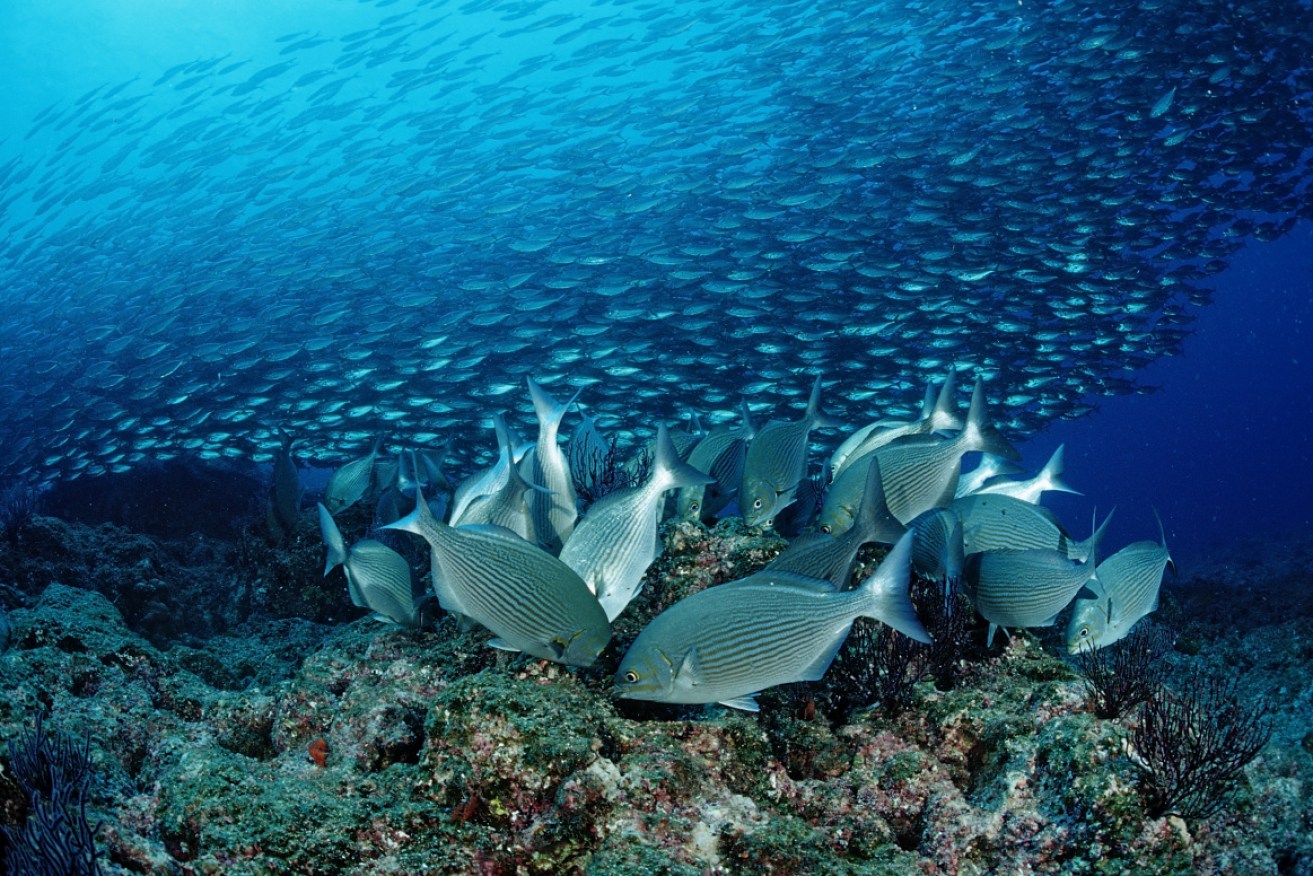Climate change is forcing coral reef fish to move south


Rabbitfish are moving south and eating kelp belonging to other species. Photo: Getty
Marine species, including a deadly type of jellyfish, are being spotted far from their usual habitats, in a phenomena disrupting Australia’s ecosystems.
As ocean temperatures warm, more sea creatures are migrating north, south or down into deeper waters to escape the heat and find new homes with a more suitable water temperature.
Sea surface temperatures in Australia have risen by nearly 1 degree Celsius since 1900.
On average, species are moving toward the north and south poles at about 17 kilometres per decade on land, and about 78 kilometres per decade in the ocean.
More than 100 Australian marine species have already started to venture south, including the deadly irukandji jellyfish.

The Irukandji jellyfish is tiny and potentially lethal. Photo: AAP
These tiny, translucent killers are reportedly drifting further down Queensland’s coastline due to warmer temperatures, threatening the future of the Gold Coast’s tourism industry.
The migration of coral reef fish, though not as terrifying as the extremely venomous irukandji jellyfish, could have a huge effect on our marine ecosystem.
And it’s not the meat-eating kind of fish we need to worry about. It’s the vegetarians that only feed on plants and algae.
Researchers from the University of Western Australia found that herbivorous coral reef fish, such as rabbitfish, were nibbling away kelp used by other species as their homes.
Kelp is an important food source for rock lobster and abalone, which make up an important part of our fishing industry.

South Australian lobster is probably the highest-priced lobster in the world.
Not only were the coral reef fish chewing through precious habitats and food sources, they were also leaving behind more poo droppings than usual, which was attracting an entirely different group of sea life creatures.
This might not sound like much given that species have been moving around since life on Earth began, but the migration of these fish could potentially disturb the existing ecosystem.
That’s because their new dining locations are making species come together that have never interacted before, and pushing apart other species that had previously depended on each other for food and shelter.
CSIRO research scientist Dr Alistair Hobday described the phenomenon as a “gradual reshuffling of animals moving down the coast”.
“We hope the coral will also move south, but at the moment the fish are getting there first,” Dr Hobday told The New Daily.
“It’s bad because it means that climate change is real – those species are indicating that tropical reefs are no longer a suitable environment.”
He said it was not only the long-term effects of climate change that we needed to worry about.
It was also extreme weather events, such as the marine heatwave in Western Australia in 2011 that “killed kelp along the coastline and decimated abalone in the area”.
Water temperatures off the south-western coast rose to unprecedented levels during February and March, and had a severe impact on the ecosystem and fishing industries.
Since 2010, mangroves in the north of Australia, kelp forests to the west and off Tasmania, and the corals of the Great Barrier Reef have all been thumped by separate marine heatwaves.








